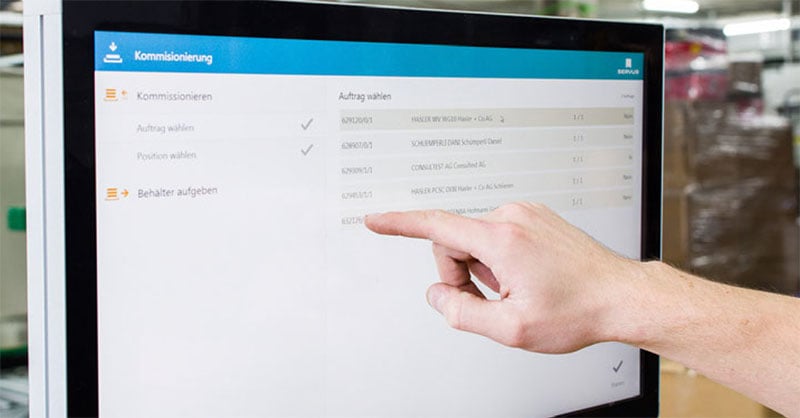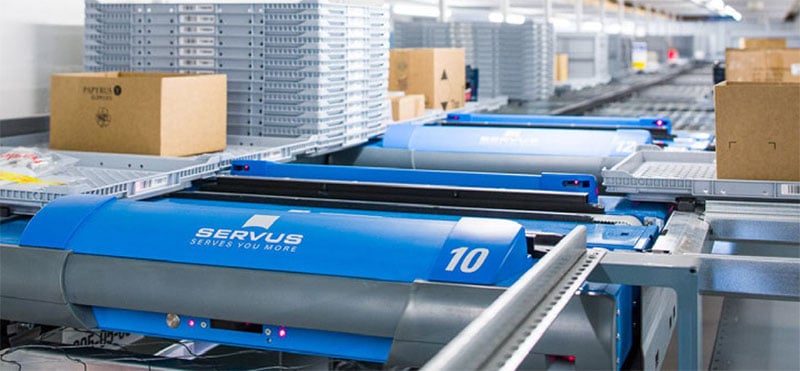The "invisible" warehouse
The autonomous robotic carriers from Servus Intralogistics are able to use the tracks on which they run for storage at the same time. This way, customers can have an “invisible” warehouse. Swiss wholesaler Hasler in Winterthur saved precious floor space that could be used much more sensibly.
No matter if ordered online or purchased on site in one of the five pro centres in Switzerland: the items were previously transported into a dynamic interim buffer by one of the 23 Servus robotic carriers and then taken to packaging just-in-time.
Five years ago, people at Winterthur wondered how to design their logistics processes more flexibly, cost-efficient and efficient. Today, the Servus system transports and buffers 80 percent of the 35,000 items in the wholesaler’s range. The Servus system spans two floors.
Buffer storage for partial orders
Autonomous robotic carriers run on overhead rails suspended from the ceiling. This keeps valuable floor space free. Servus takes care of interim storage of picked partial orders. It is not necessary to build a separate warehouse for this. Servus uses its track as a warehouse. Storage locations are placed on either side of the track. They can be used for dynamic interim buffering of partial orders. Only when all partial orders have been picked and collected in the buffer will Servus take them to the packaging zone based on the pull principle. Picking can start long before the end of order receipt or before the time of dispatch. This enables employees to work continually. Peaks are minimised.


Hasler uses more than 1000 bins along the track for interim storage of orders.
The flexible system convinced the customer
Why did they choose Servus? “The great flexibility of this system was the essential factor,” says Robert Hinnen, head of logistics are Hasler, with a view into the future: “The Servus system can simply grow along with us. We can expand it easily and without interrupting operation.” This is made possible by having smart components and power supplies integrated in the robotic carriers. The tracks are made of simple carrier profiles. This way, output can be adjusted to demand. When a higher throughput is needed, additional ARCs (Autonomous Robotic Carriers) can be placed on the track.
The warehouse is growing while remaining “invisible”
Additional tracks with storage locations can be installed when more storage space is needed. The warehouse grows while remaining “invisible”. In any case, it does not use up valuable floor space. Floor space should be used for production. Circulation stocks are to be reduced to a minimum. A warehouse should be as small as possible and only just as large as necessary. From the lean point of view, the best warehouse is one that doesn’t exist in the first place. The approach of using overhead tracks as a warehouse brings Servus quite close to this vision.
Current trends and information on intralogistics can be found in the new SERVUS Whitepaper:
.jpg)
About the author
Wolfgang Brändle is Product and plant designer at Servus Intralogistics

